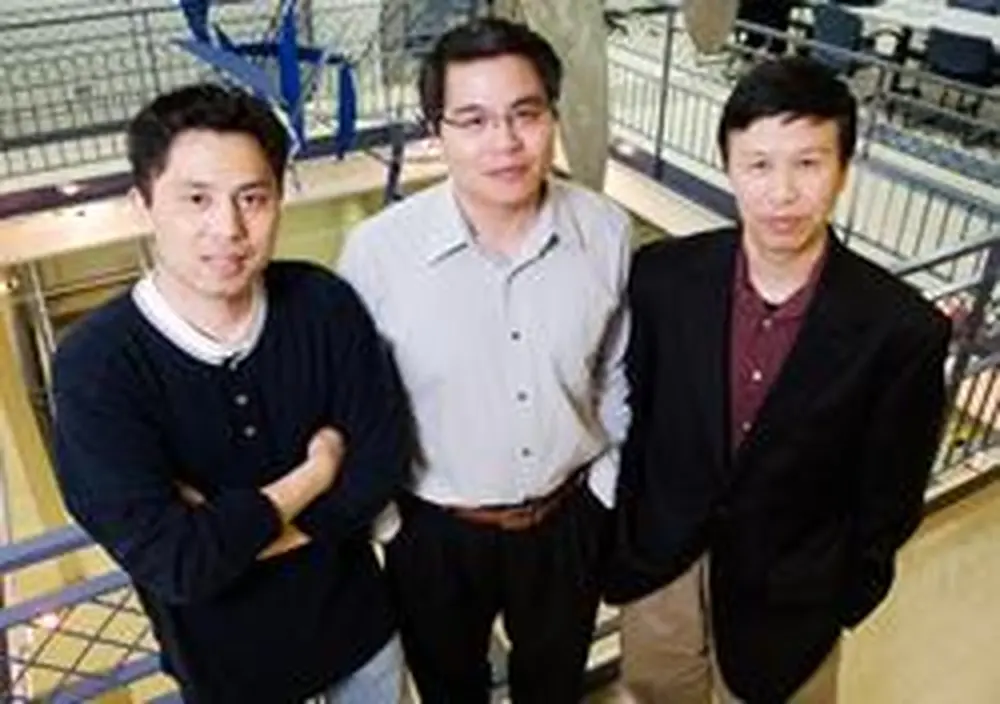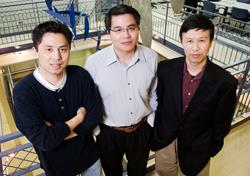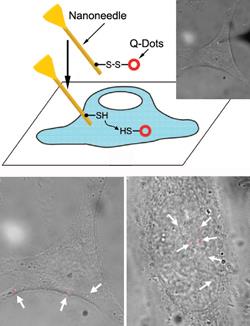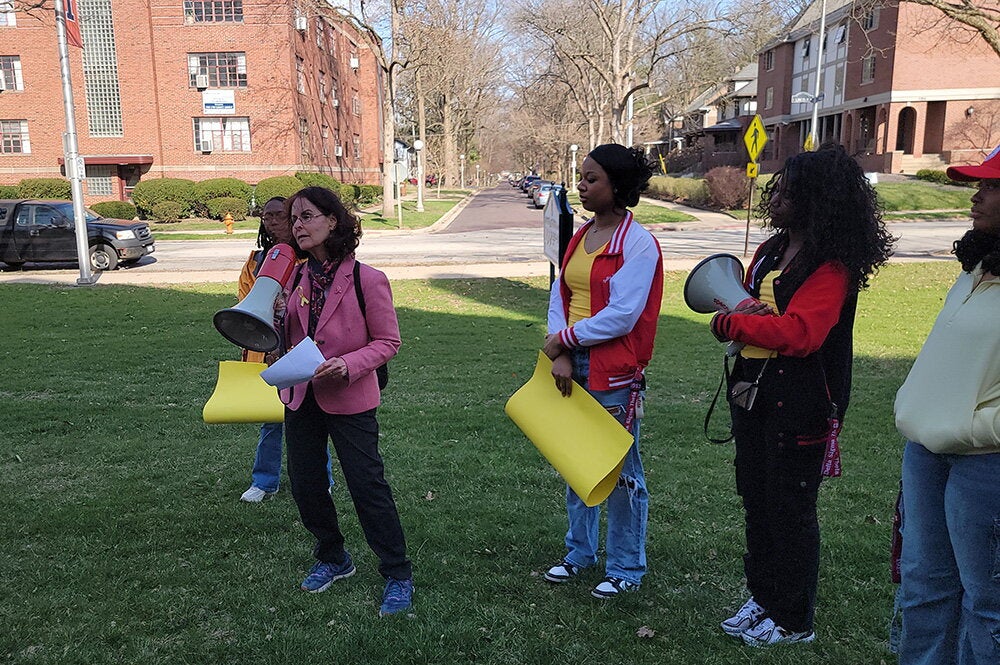

Researchers at the University of Illinois have developed a membrane-penetrating nanoneedle for the targeted delivery of one or more molecules into the cytoplasm or the nucleus of living cells. In addition to ferrying tiny amounts of cargo, the nanoneedle can also be used as an electrochemical probe and as an optical biosensor.
“Nanoneedle-based delivery is a powerful new tool for studying biological processes and biophysical properties at the molecular level inside living cells,” says Min-Feng Yu, a professor of mechanical science and engineering and one of the lead investigators on the project.
In their study, the researchers deliver, detect, and track individual fluorescent quantum dots in a cell’s cytoplasm and nucleus. The quantum dots can be used for studying molecular mechanics and physical properties inside cells.

To create a nanoneedle, the researchers begin with a rigid but resilient boron-nitride nanotube. The nanotube is then attached to one end of a glass pipette for easy handling, and coated with a thin layer of gold. Molecular cargo is then attached to the gold surface via “linker” molecules. When placed in a cell’s cytoplasm or nucleus, the bonds with the linker molecules break, freeing the cargo.
With a diameter of approximately 50 nanometers, the nanoneedle introduces minimal intrusiveness in penetrating cell membranes and accessing the interiors of live cells.The delivery process can be precisely controlled, monitored, and recorded—goals that have not been achieved in prior studies.
“The nanoneedle provides a mechanism by which we can quantitatively examine biological processes occurring within a cell’s nucleus or cytoplasm,” says Yang Xiang, a professor of molecular and integrative physiology and a co-investigator. “By studying how individual proteins and molecules of DNA or RNA mobilize, we can better understand how the system functions as a whole.”
The ability to deliver a small number of molecules or nanoparticles into living cells with precision may make feasible numerous new strategies for biological studies at the single-molecule level, which would otherwise be technically challenging or even impossible, the researchers report.


